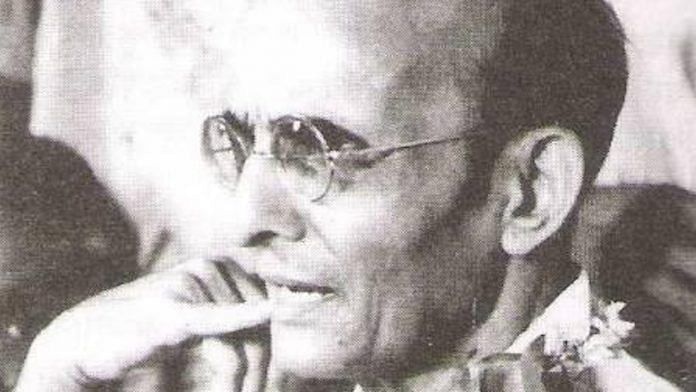
Thank you dear subscribers, we are overwhelmed with your response.
Your Turn is a unique section from ThePrint featuring points of view from its subscribers. If you are a subscriber, have a point of view, please send it to us. If not, do subscribe here: https://theprint.in/
Savarkar is name that is heard a lot but known much lesser, its quite a difficult to speak and write about Savarkar without being named Fundamentalist. This is greatest sadness for Indian mind that any discussion on Savarkar is held only on his thoughts on Hindutva, it’s exactly like Gandhi would be remembered on his thoughts on caste system.
In the early 20th century, Savarkar was one of the earliest freedom fighters from Maharashtra who launched the national campaign for Swadeshi. Savarkar was concerned by the partition of Bengal in 1905, and he heard calls for Swadeshi at the time. He demanded nothing less than the burning of all foreign clothing. In early October 1905, he delivered a furious speech in the hall of the Sarvajanik Sabha, Pune, inspiring everyone there with his notion of mass burning of foreign garments. When Savarkar led his audience in a mass bonfire of foreign clothes and fabric, the eminent writer and poet N. C. Kelkar was present and chairing the meeting. It was one of those moments when every heart in the audience wanted to subscribe to the idea of burning, but Kelkar also suggested that instead of burning, why not give it to the poor, to which Savarkar replied that they were not mere clothes or foreign goods, but the entire identity of imperial power, and that by burning the foreign goods, they were burning the British empire.
Even in the temple town of Omkareshwar, where priests organised a convention and backed the concept of Swadeshi, and in Poona, where ladies from all walks of life came forward to boycott everything foreign, from bengals to glasswares, Savarkar’s rousing speech had far-reaching effects.
The initial cry for Swadeshi erupted in Bengal, but Savarkar and others helped to intensify it. Savarkar’s brother Babarao arranged a similar event in Nashik, which was wildly popular; this was the time when a remote event joined numerous Indian provinces in a call for Swadeshi.
Later, the tallest leader of India, Bal Gangadhar Tilak, also participated in the event when the Abhinav Bharat group of Savarkar arranged the mass bonfire of Foreign garments, but Savarkar paid a high price for his distinguishing reputation in the Swadeshi movement.
Raghunath Purnath Paranjpe, the principal of Fergusson College, expelled Savarkar from the boarding school and penalized him for his role in the Swadeshi movement. As with Bengali revolutionaries like Sri Aurobindo, who were in the forefront of the campaign for Swadeshi, the Indian mainstream media mostly overlooked Savarkar’s contribution to Swadeshi.
When Savarkar sought for the scholarship granted by Shyamji Krishna Varma to study in London, he felt a measure of comfort, notwithstanding the difficulty of the Swadeshi cause. Savarkar received letters from Bal Gangadhar Tilak explaining why he should be awarded the scholarship and describing Saavarkar’s cause as the Swadeshi cause.
Before departing for London, Savarkar spoke primarily about Swadeshi. He even urged people in Nashik not to use white sugar in their festivals (makar Sankranti), but instead to use Desi jaggery. For Savarkar, the conflagration of foreign clothing, not using foreign sugar was not merely about garments, or food choices but also about the deeper relationship a nation had with these goods, whether it be governance, language, or way of life.
It’s worth noting, and it probably says a lot about that, that although Mahatma Gandhi was able to replicate his swadeshi position using the charkha or spinning wheel, it would not have been possible if the early leaders, including Savarkar, had not provided their views, impassioned speeches, and organised movement behind it. Gandhi’s charkha was a symbol for me that declared unequivocally that Swadeshi and its story were at the heart and soul of the national liberation movement.
These pieces are being published as they have been received – they have not been edited/fact-checked by ThePrint.
Also read: Who is Savarkar? And should we discuss him? 14-state survey throws up stunning results


COMMENTS